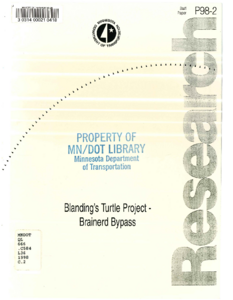Blanding's Turtle Project - Brainerd Bypass
Date Created
1998-10
Report Number
P98-2
Description
Identifying deer vehicle collision concentrations in Minnesota
Date Created
2023-11
Report Number
2023-38
Description










